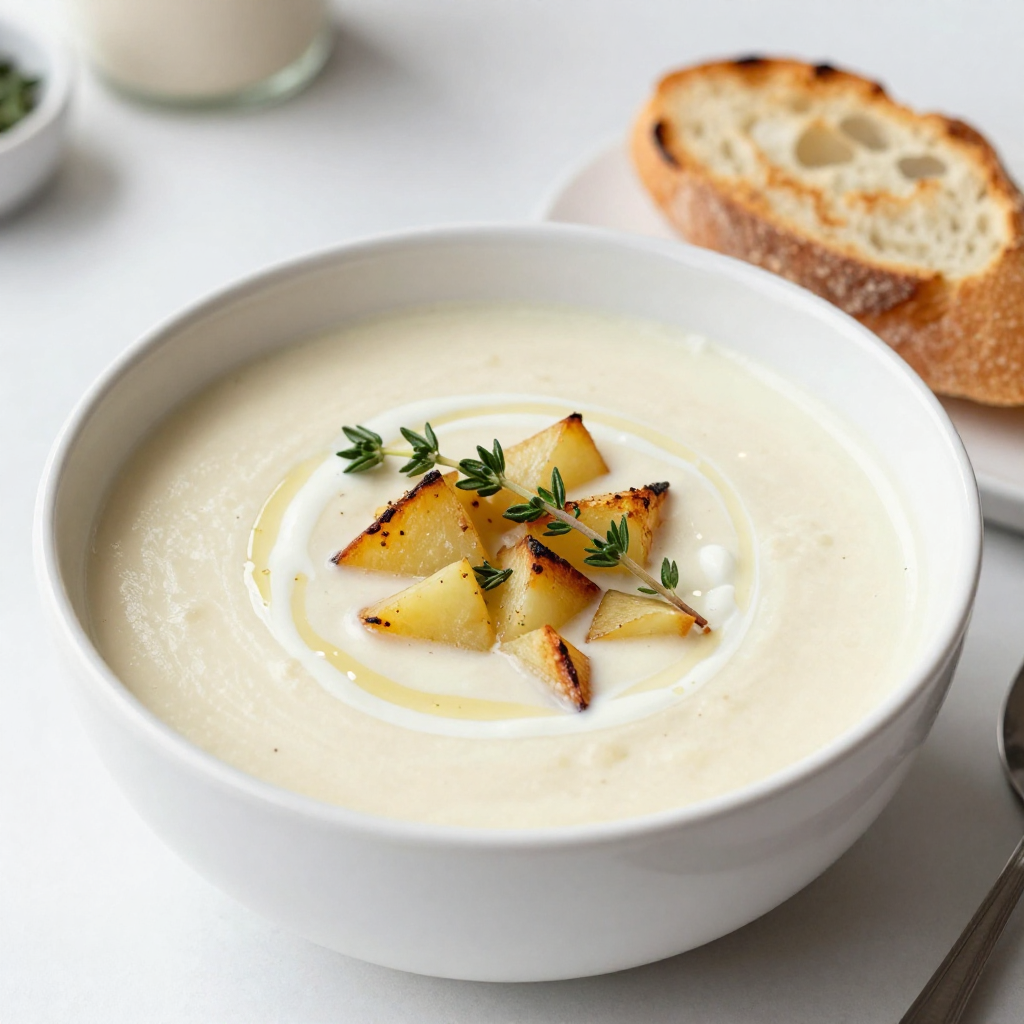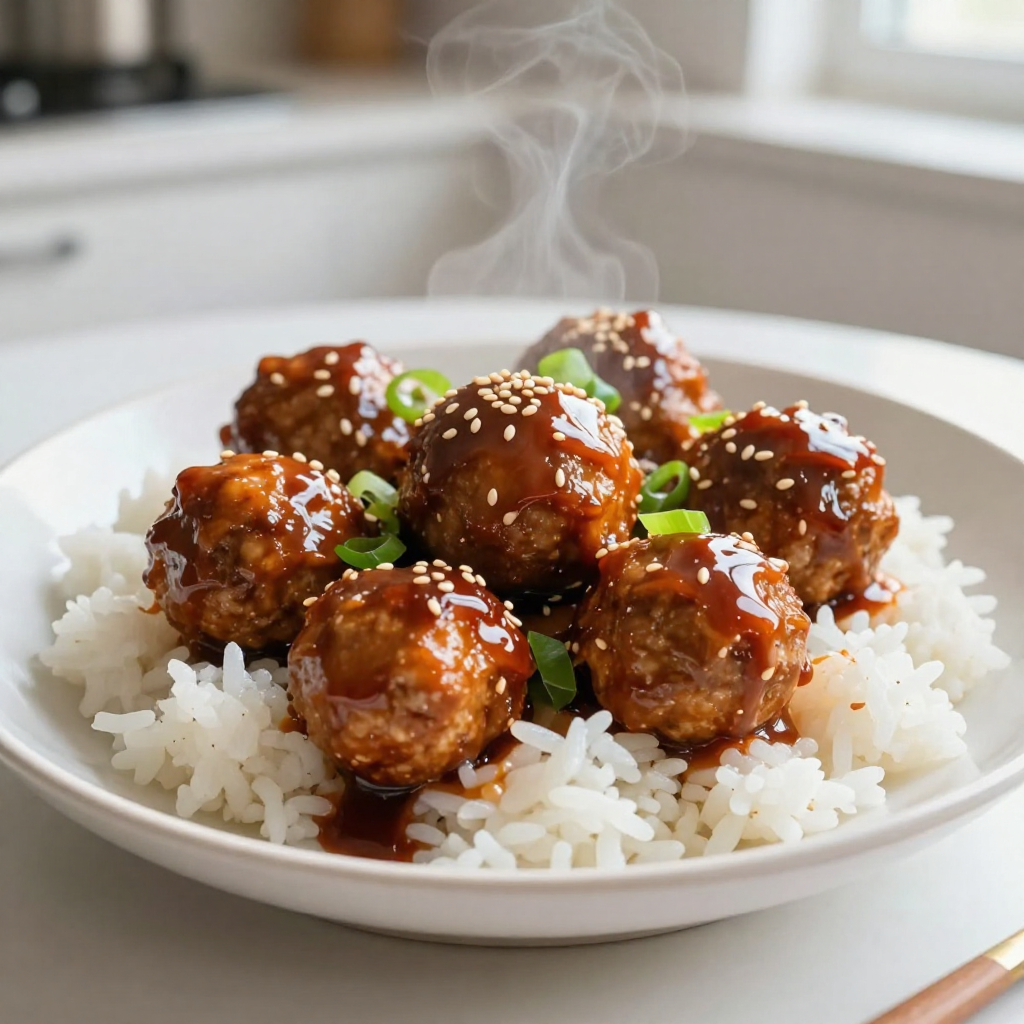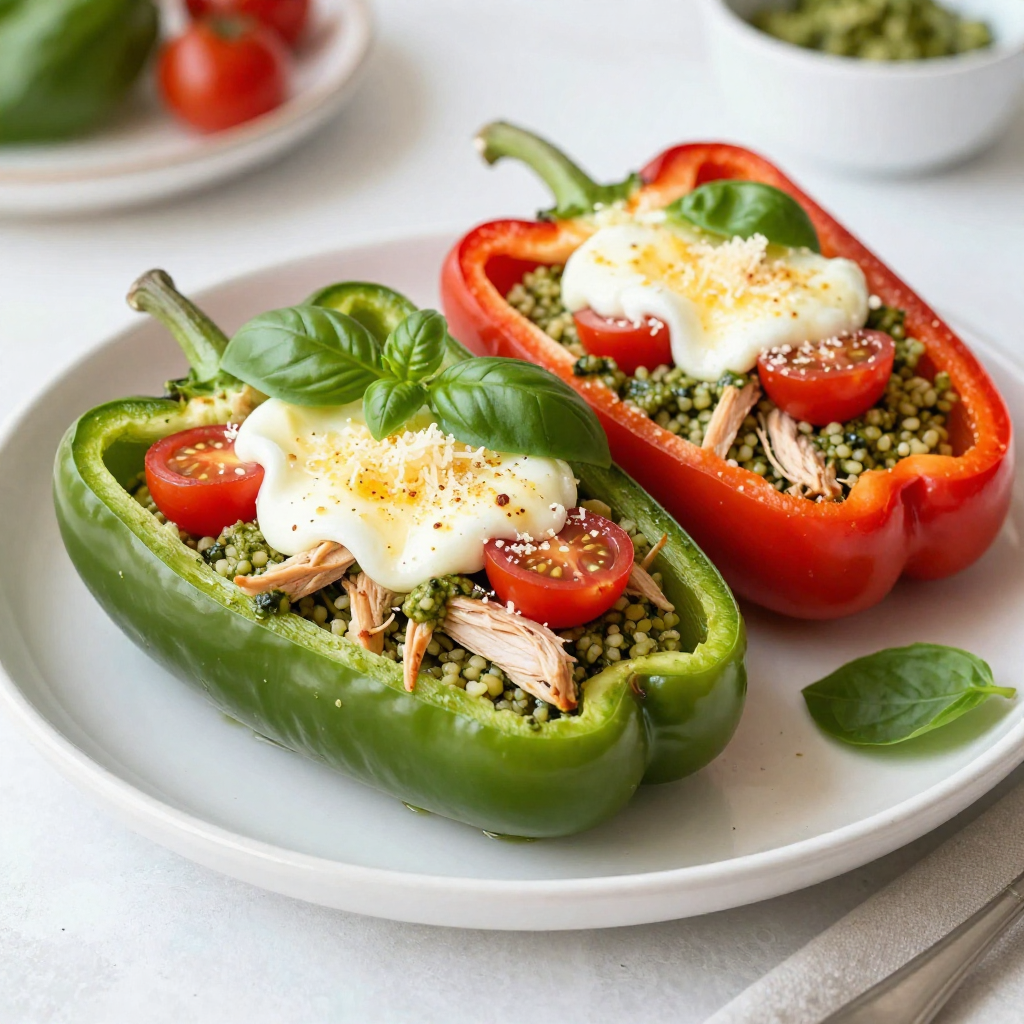Craving a quick, zesty dish? Spicy Sesame Noodles are your answer! This simple recipe uses fresh veggies and a rich sauce to bring bold flavors to your table. You can whip this up in no time, making it perfect for busy nights. Let’s dive into the ingredients, tips, and step-by-step instructions that will make you the star chef at home! Ready to impress your taste buds?
Why I Love This Recipe
- Healthy and Wholesome: This recipe uses whole wheat noodles and plenty of fresh vegetables, making it a nutritious choice for any meal.
- Customizable Heat: The level of spiciness can be adjusted easily by varying the amount of chili paste, catering to all taste preferences.
- Quick and Easy: With a total prep and cook time of just 30 minutes, it’s perfect for a weeknight dinner or a last-minute meal.
- Flavorful Sauce: The combination of sesame oil, ginger, and garlic creates a deliciously rich and savory sauce that coats the noodles perfectly.
Ingredients
Main Ingredients
– 8 oz. whole wheat spaghetti or noodles of choice
– 3 tablespoons sesame oil
– 2 tablespoons soy sauce (or tamari for gluten-free)
– 1 tablespoon chili paste (adjust to taste)
– 1 teaspoon grated fresh ginger
– 2 garlic cloves, minced
– 2 tablespoons rice vinegar
– 1 cup shredded carrots
– 1 cup red bell pepper, thinly sliced
– 1/2 cup green onions, sliced
– 1 tablespoon sesame seeds
To make spicy sesame noodles, gather these main ingredients. Whole wheat spaghetti gives a nice texture. Sesame oil adds rich flavor, while soy sauce brings saltiness. Chili paste gives the dish its kick. Fresh ginger and garlic enhance the aroma. Rice vinegar balances the flavors well. You can use colorful veggies like carrots and bell peppers for crunch and nutrition. Green onions add a fresh touch, and sesame seeds provide a nutty finish.
Optional Add-ins
– 1 tablespoon honey or agave syrup
– Fresh cilantro for garnish
You can sweeten the sauce with honey or agave syrup. This adds a nice contrast to the spice. Fresh cilantro makes a great garnish too. It adds color and a burst of flavor. If you have dietary needs, consider swapping ingredients. For example, use gluten-free noodles or different veggies. This recipe is flexible, so feel free to make it your own!
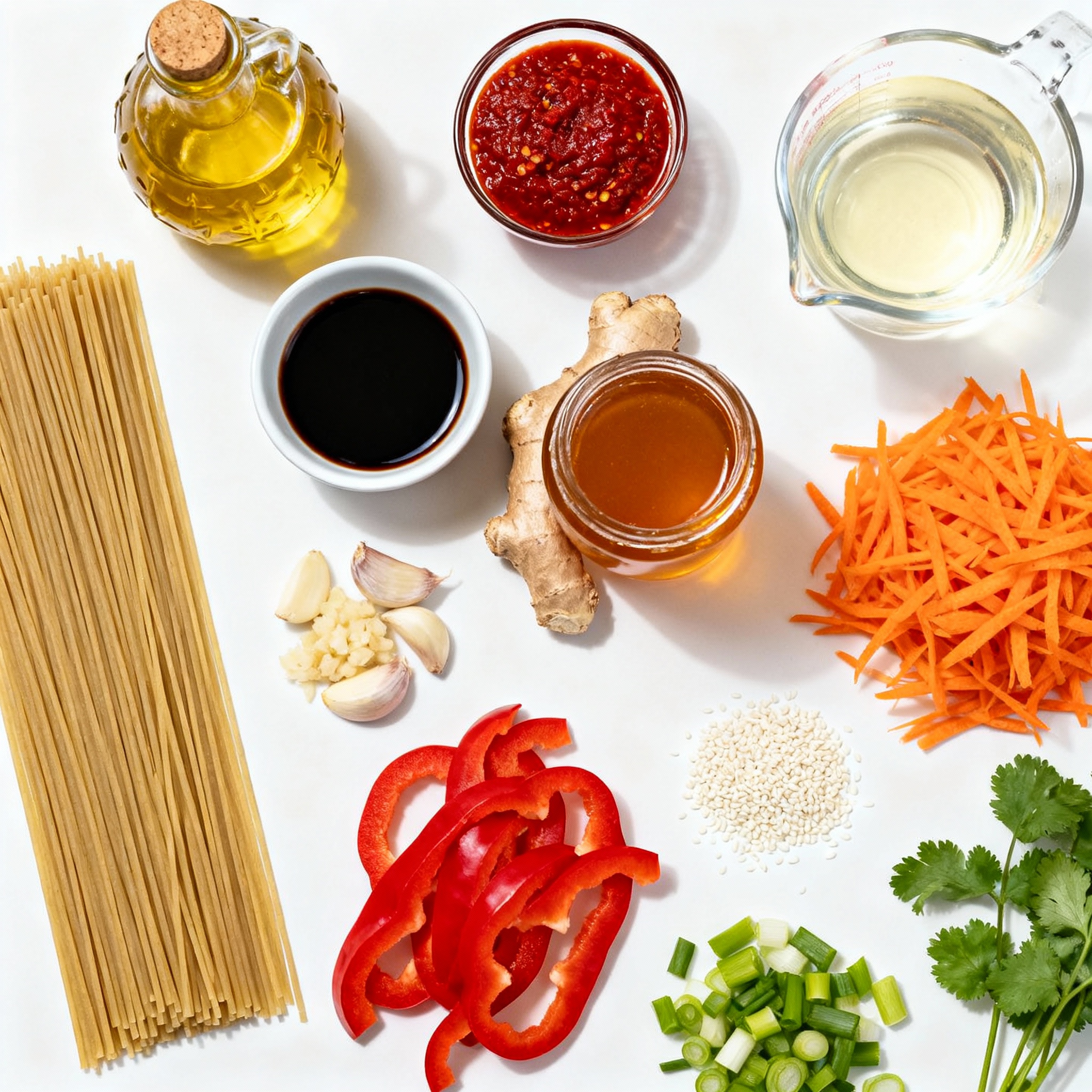
Step-by-Step Instructions
Cooking the Noodles
To cook the noodles perfectly, bring a large pot of salted water to a boil. Add the noodles and cook them as directed on the package. Aim for al dente, which means they should be firm yet tender.
After cooking, drain the noodles in a colander. Rinse them under cold water. This stops the cooking and cools them down quickly. It also helps prevent sticking.
Making the Sauce
In a mixing bowl, combine the sesame oil, soy sauce, and chili paste. Whisk these together until mixed well. You can adjust the chili paste for spice. If you like it hot, add more. If you prefer it milder, use less.
Sautéing the Vegetables
Heat a skillet over medium heat. Add a drizzle of sesame oil. Once hot, toss in the shredded carrots and red bell pepper. Sauté these for about 3-4 minutes. You want them tender but still crisp. This step adds flavor and texture.
Combining Ingredients
Now, add the cooked noodles to the skillet with the sautéed veggies. Pour the sauce over everything. Toss the noodles and veggies together. Make sure every noodle gets coated in that delicious sauce. Heat everything through for a few minutes.
Final Touches
Stir in the sliced green onions and sprinkle sesame seeds on top before serving. This adds a nice crunch and flavor. For a nice look, arrange the dish in a bowl or plate. Garnish with fresh cilantro if you like. Serve warm for the best taste.
Pro Tips
- Adjust the Spice Level: Start with a small amount of chili paste and gradually add more to suit your taste preferences.
- Use Fresh Ingredients: Fresh ginger and garlic will elevate the flavors of your sauce compared to pre-packaged alternatives.
- Customize Your Veggies: Feel free to swap or add other vegetables like broccoli or snap peas for a personal touch.
- Garnish for Flair: A sprinkle of sesame seeds and fresh cilantro not only adds flavor but also enhances the dish’s presentation.
Tips & Tricks
Cooking Tips
To cook noodles well, start with a large pot. Use enough water and add salt. This adds flavor. Boil the water before adding your noodles. Cook until they are al dente. This means they should be firm but not hard. Drain the noodles and rinse them in cold water. This stops the cooking and helps prevent sticking.
To keep the noodles from sticking, toss them with a little sesame oil after rinsing. This adds flavor too! Make sure to stir them occasionally while cooking. This keeps them separated and helps them cook evenly.
Flavor Enhancements
To boost flavor, think about adding fresh herbs. Chopped cilantro adds a fresh taste. A sprinkle of crushed red pepper can add more heat. You can also try adding lime juice for a zesty kick.
Adjust the sauce to fit your taste. If you want it sweeter, add more honey or agave syrup. For more heat, increase the chili paste. Taste as you go to find the right balance for you.
Serving Suggestions
Spicy sesame noodles pair well with many sides. Try serving them with grilled chicken or tofu for protein. A crunchy cucumber salad or steamed broccoli works well too.
Serve the noodles warm, but they can also be great cold. They make a fun picnic dish! For best taste, eat them right after cooking. The flavors are freshest this way.
Variations
Dietary Variations
If you need gluten-free options, choose tamari instead of soy sauce. You can also swap out the noodles for rice noodles or quinoa noodles. Both options work well with the sauce and keep the dish gluten-free.
For a vegan twist, replace honey with agave syrup. This keeps the sweet flavor without using animal products. You can also check for vegan soy sauce to make sure the dish fits your diet.
Ingredient Swaps
You can change up the veggies based on what you like. Try adding broccoli, snap peas, or bell peppers for extra crunch and flavor. These swaps can bring new tastes and colors to your plate.
Noodle variations can also change the dish’s texture. Whole wheat spaghetti gives a hearty bite. Rice noodles are lighter and soak up the sauce well. Each type offers a unique experience in every bite.
Cultural Variations
Spicy sesame noodles have many regional styles. In Asian cultures, you might find different sauces or spice levels. Some recipes use peanut sauce or miso, adding depth and richness.
The level of heat can also change based on cuisine. For a milder dish, reduce the chili paste. If you want more heat, add extra. Adjusting the spice lets you explore flavors from different culinary backgrounds.
Storage Info
Refrigeration
To store leftovers, let the noodles cool down first. Place them in an airtight container. This keeps them fresh and tasty. You can store them in the fridge for up to three days. If you wait longer, they may lose their flavor and texture.
Freezing
Freezing spicy sesame noodles is easy. First, cool them completely. Then, portion them into meal-sized servings. Use freezer-safe containers or bags to avoid freezer burn. Squeeze out any extra air before sealing. You can freeze them for up to one month. When ready to eat, thaw them overnight in the fridge.
Reheating Tips
Reheat noodles gently to keep their texture. The best method is using a skillet. Heat a little sesame oil over low heat. Add noodles and stir until warmed through. This usually takes about 5 to 7 minutes. You can also microwave them. Use a damp paper towel to cover the bowl. Heat in short bursts, stirring in between. Aim for a temperature of 165°F for safe eating.
FAQs
How do I adjust the spice level in spicy sesame noodles?
To change the spice level, you can add or reduce the chili paste. Start with one tablespoon for mild heat. If you want more spice, add another teaspoon. You can also add chili flakes for extra heat. For a milder dish, skip the chili paste or use a sweet sauce instead. Tasting as you go helps find the right level for you.
Can I make spicy sesame noodles ahead of time?
Yes, you can make spicy sesame noodles ahead of time. Cook the noodles and sauté the veggies as usual. Then, store them separately in the fridge. Make the sauce and keep it in a jar. Combine everything just before serving. This keeps the noodles fresh and the veggies crisp. You can enjoy this dish warm or cold.
What is the best way to serve spicy sesame noodles?
Serve your spicy sesame noodles warm in a large bowl. Top with sliced green onions and sesame seeds for a nice touch. You can add fresh cilantro for flavor and color. Pair them with grilled chicken or tofu for protein. They taste great with a side of steamed broccoli or snap peas.
Where can I find spicy sesame noodles in restaurants?
Many local Asian restaurants serve spicy sesame noodles. Look for places that offer Sichuan or Chinese dishes, as they often have this item. Some ramen shops may also feature spicy noodle dishes. Check online reviews or ask friends for recommendations. You might find a hidden gem in your area!
This article breaks down how to make spicy sesame noodles. You learned about the key ingredients, cooking methods, and tips for the best flavor. Remember, you can customize the dish with different veggies or sauces. Storing leftovers is easy, and you can even freeze them! Enjoy making this simple yet delicious recipe that fits any meal. Keep experimenting to find your perfect version. Happy cooking!
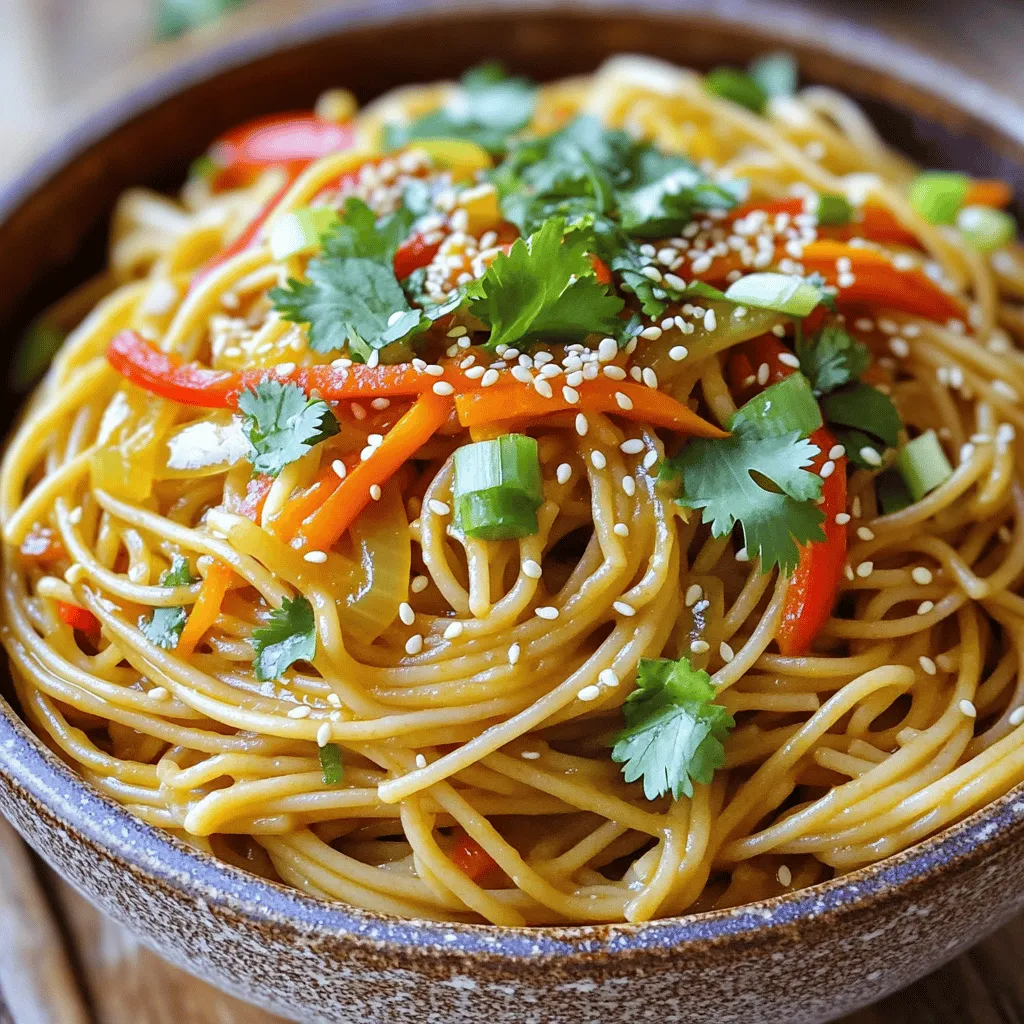
.png)
